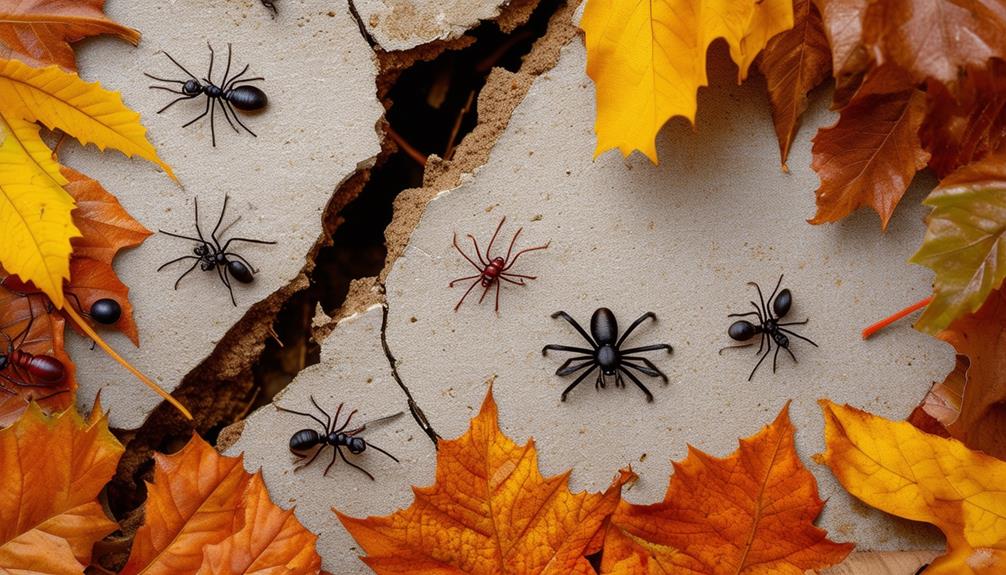Snakes have long been a subject of fascination and fear for many people. It is a common belief that these reptiles have a tendency to invade our homes, slithering in through open doors or cracks in the foundation. However, is there any truth to this theory?
In this article, we will delve into the behavior of snakes and explore whether it is common for them to enter our houses.
Understanding snake behavior is essential in determining the likelihood of finding one in your home. Snakes are cold-blooded creatures that seek out warm environments to regulate their body temperature. They are also highly adaptable and can thrive in a variety of habitats, including urban areas.
While it is true that snakes may occasionally find their way into houses, it is important to note that this occurrence is relatively rare. Snakes prefer to avoid human contact and will typically only enter a residence if they are in search of food, shelter, or water.
Therefore, it is crucial to understand the factors that may attract snakes to your home and take steps to prevent their entry.
Understanding Snake Behavior
The study of snake behavior provides insight into their potential presence within residential environments. Understanding snake habitat preferences is crucial in determining the likelihood of snakes entering homes.
Snakes are ectothermic animals, meaning that they rely on external sources of heat to regulate their body temperature. As such, they are often found in areas that offer suitable thermal conditions such as sunny spots, rocks, and debris.
Snakes are particularly attracted to residential areas with abundant prey sources, such as rodents and insects, which may also lead them to venture closer to human habitation.
Snake movement patterns also play a significant role in their potential presence within residential environments. Snakes are highly adaptable creatures and can navigate various types of terrain, including yards and gardens. They are adept climbers and can easily slither up trees, walls, and even buildings. Additionally, snakes can squeeze through small openings due to their flexible bodies, allowing them to access spaces that may seem unlikely for their entry. These movement patterns, combined with their habitat preferences, increase the chances of snakes finding their way into houses.
Identifying potential entry points is the next step in understanding the likelihood of snakes coming into homes.
Identifying Potential Entry Points
Identifying potential entry points into residential spaces may involve a careful examination of small openings, gaps, or crevices that could serve as pathways for unwelcome reptilian visitors.
Snakes are known to inhabit a variety of environments, both natural and man-made. Common snake habitats include grassy fields, forests, marshes, and even urban areas. Therefore, it is essential to inspect areas around the house where snakes might find shelter, such as piles of wood, overgrown vegetation, or cluttered storage spaces.
To determine if snakes have made their way into your home, there are several signs to look out for. Shed snake skins, droppings, and tracks are indications that snakes might be present. Additionally, if you notice an increase in rodent activity, as snakes are natural predators of rodents, it may suggest the presence of snakes in your surroundings. Unusual sounds, such as hissing or rustling, may also be an indication that a snake has taken up residence within your home. Being aware of these signs and conducting regular inspections can help in identifying potential entry points and taking appropriate measures to address the issue.
Transitioning into the subsequent section about creating a snake-proof environment, it is important to take proactive steps to prevent snakes from entering your home. By sealing off any small openings or cracks in the foundation, walls, or windows, you can significantly reduce the chances of snakes finding their way inside. Additionally, keeping the surrounding area clean and well-maintained can discourage snakes from seeking shelter near your property.
Taking these precautions will help create a safe and snake-free environment for you and your family without the need for harmful interventions.
Creating a Snake-Proof Environment
One effective method for preventing snakes from entering residential spaces is by creating an environment that is inhospitable to their presence.
There are various snake repellent methods available that can help discourage snakes from approaching homes. One common approach is to use snake repellent sprays or granules around the perimeter of the property. These products typically contain chemicals or natural ingredients that emit odors snakes find unpleasant, deterring them from entering the area.
Additionally, homeowners can consider installing snake fencing around their yard or garden areas. Snake fencing is typically made of metal or mesh material and is designed to be buried into the ground to prevent snakes from burrowing underneath. This can be an effective way to snake-proof garden areas and create a barrier that prevents snakes from accessing the property.
Another important aspect of creating a snake-proof environment is maintaining a well-maintained yard. Regularly trimming overgrown vegetation and clearing debris helps eliminate potential hiding spots for snakes. It is also important to keep grass short and remove any piles of wood or rocks that may provide shelter for snakes.
Additionally, sealing any gaps or cracks in the foundation or walls of the house can help prevent snakes from finding their way indoors. This includes checking for openings around doors, windows, and utility entry points.
By implementing these snake-proofing measures, homeowners can reduce the likelihood of snakes entering their living spaces and create a safer environment for themselves and their families.
Transitioning into the subsequent section about implementing preventive measures, it is important to consider a holistic approach to snake control to ensure long-term effectiveness.
Implementing Preventive Measures
Implementing preventive measures is crucial in creating a truly impenetrable fortress against the unwelcome presence of slithering intruders. By combining effective pest control methods with home security measures, you can significantly reduce the likelihood of snakes entering your house. Pest control methods such as eliminating potential food sources, such as rodents and insects, can discourage snakes from seeking shelter in your home. Additionally, keeping your yard clean and free of debris, such as stacked firewood or tall grass, can eliminate potential hiding spots for snakes. Home security measures, on the other hand, focus on physically preventing snakes from entering your house. This can include sealing any gaps or cracks in the foundation or walls, installing door sweeps or weather stripping, and ensuring that windows and screens are in good condition.
To further enhance the effectiveness of these preventive measures, it can be helpful to create a table that outlines specific actions and their corresponding benefits. For example:
| Preventive Measure | Benefits |
|---|---|
| Eliminating food sources | Reduces the attraction of snakes to your property |
| Keeping yard clean | Eliminates potential hiding spots for snakes |
| Sealing gaps and cracks | Prevents snakes from entering your house through openings |
| Installing door sweeps | Blocks the entry of snakes through gaps under doors |
By implementing these preventive measures, you can significantly reduce the chances of snakes coming into your house. However, even with the most comprehensive preventive measures, there is still a possibility of encountering a snake. In such a situation, it is important to know how to handle it safely and responsibly, which will be discussed in the subsequent section about ‘what to do if you encounter a snake’.
What to Do If You Encounter a Snake
When encountering a snake, it is essential to know the appropriate actions to take in order to ensure your safety and the well-being of the snake. Here are some steps to follow if you encounter a snake:
- Stay calm and do not panic. Most snakes are not aggressive and will not attack unless they feel threatened.
- Keep a safe distance from the snake. Do not try to approach or handle it. Remember, snakes have a striking range that can vary depending on the species.
- Identify the snake if possible. It is important to know if the snake you encountered is venomous or non-venomous. This can help determine the level of danger and the appropriate actions to take.
- If you are unsure about the snake’s identification, it is best to assume it is venomous and take necessary precautions.
- Contact snake removal services. If the snake is inside your house or poses a threat to you or your family, it is recommended to seek professional help. Snake removal services are trained to handle snakes safely and can ensure their proper relocation.
To prevent snakes from entering your house in the future, there are several snake repellent methods you can consider. These methods aim to create an environment that is unattractive to snakes and discourages them from entering your property. Some commonly used snake repellent methods include:
- Seal all cracks and gaps in your house’s foundation, walls, and windows. Snakes can enter through small openings, so it is important to ensure your house is well-sealed.
- Keep your yard tidy and free of clutter. Remove any piles of debris, as they can provide hiding spots for snakes.
- Trim shrubs, bushes, and tall grass regularly. Snakes are more likely to take shelter in overgrown areas, so keeping your yard well-maintained can help deter them.
- Install snake-proof fencing around your property. This type of fencing is designed to prevent snakes from slithering through or climbing over.
- Use snake repellent products. There are commercial snake repellents available that use natural ingredients, such as sulfur or cinnamon, which are believed to repel snakes. However, their effectiveness may vary, and it is important to follow the instructions carefully.
By taking these precautions and being prepared, you can minimize the chances of encountering a snake in your house and ensure the safety of both yourself and the snake.
Frequently Asked Questions
How can I protect my pets from snakes entering my house?
Protective measures can be taken to prevent snakes from entering your house. These include sealing all gaps and cracks, installing screens on windows and doors, and keeping the surroundings clean. Snake repellents can also be used as an additional deterrent.
Are there any specific snake species that are more likely to enter homes?
Certain snake species, such as rat snakes, garter snakes, and black racers, are more likely to enter homes due to their adaptability and ability to exploit small openings. Preventive measures, including sealing cracks and gaps, can help deter snakes from entering houses.
Can snakes climb walls and get into upper floors of a house?
Snakes have the ability to climb trees and enter houses through roofs. While some species can climb walls and reach upper floors, this behavior is relatively uncommon. However, snakes in the house can pose a danger to children and should be handled with caution.
Are there any signs I should look for to determine if there are snakes in my house?
Signs of snakes inside your house include shed skin, droppings, and tracks. If you find a snake, keep calm, avoid confrontation, and call a professional snake removal service. The interesting statistic is that 85% of snake bites occur when people try to handle or kill snakes themselves.
Is it possible for snakes to enter my house through the plumbing system?
Snakes can potentially enter a house through plumbing systems, especially if there are gaps or openings. To prevent snake infestations, various snake repellent products are available, which can be effective in deterring snakes from entering the house.





